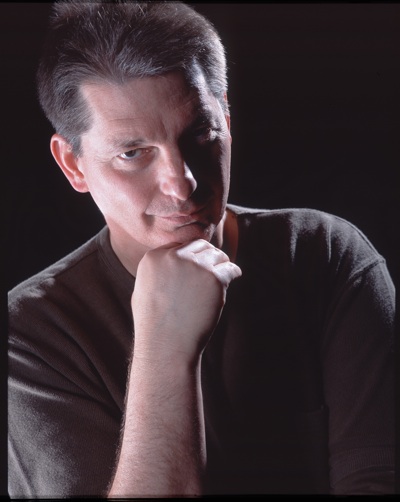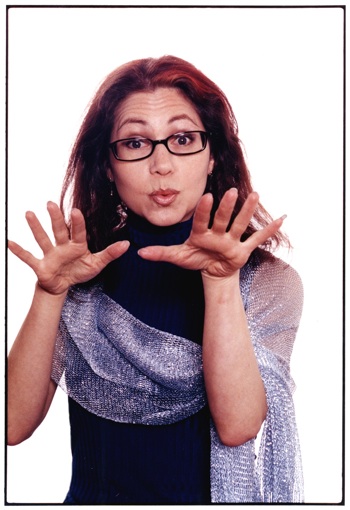Scripting the visual – ten composers at Cal Performances
A marvelous project, three years in the making, came to fruition at Zellerbach Playhouse last Friday, December 5. Composers Paul Dresher and Amy X Neuburg joined their considerable – and considerably different – forces to create a program in which ten composers joined photographs, text and music.
Titled “They Will Have Been So Beautiful: Songs and Images of Now,” Dresher’s premise was to parallel a 1962 Guggenheim proposal he discovered by photographer Diane Arbus, in which she extols the subtle power of the present: that is, something that could best be  appreciated in the future. Dresher and Neuburg commissioned eight other composers to work with found text and photos, “celebrating the commonplace, the ceremonious and the curious,” each written for the Paul Dresher Electro-Acoustic Band and with texts sung by Neuburg.
appreciated in the future. Dresher and Neuburg commissioned eight other composers to work with found text and photos, “celebrating the commonplace, the ceremonious and the curious,” each written for the Paul Dresher Electro-Acoustic Band and with texts sung by Neuburg.
What was most striking was the depth of feeling of these ten different takes and the surprising unity of sound and vision.
Pamela Z chose “17 Reasons Why” for her offering. A vocal artist who used looping to create a forest of sounds, she composed this with Neuburg’s huge vocal range in mind. On a large screen above the ensemble we saw a photograph of a cryptic sign over a monolithic building stating “17 Reasons.”
Like most of the images in this show, there was a back-story. This sign stood at 17th St and Mission for many years, advertising the furniture beneath it with “17 Reasons Why.” Pamela Z took this literally, answering, “because I didn’t mean it/because I made it by hand/because I bleed and I bleed and I bleed…”
Warm “ahhh’s” were recorded and played over and over with husky hhh’s built on top, a dense vocal fabric out of which peeked colors from violin and clarinet. Joel Davel, Dresher’s long-time collaborator, used an electronically modified marimba to add a wash of Euro-pop.
They continued with Lisa Bielawa’s “Ego Sum (overheard in transient public spaces),” a maddening list of keyholes into the common misery of strangers. Neuburg intoned the text with a Sprechstimme that emerged from speech into singing: “I don’t really understand her at all/ I’m hoping to get married again – get another husband/ I just talked with God/ I met him before he was famous…”
Above were photos of a subway bench in Queens with six disaffected travelers reading or eyes closed, turning in or away, on a cell phone or studying nails.
In Conrad Cummings’ prose poem, longing crept through the plain text, matching a photo of a deeply shadowed window table set for one. Long-held notes from violinist Karen Bentley Pollick were given edge by clarinetist Jeff Anderle, as Neuburg went from growls to high notes with tight vibratos in moments of etched beauty.
And then a truly arresting piece, Dresher’s own composition of clouds of metallic percussion and blues riffs and violin scales. His two photographs were of a darkened theatre and a drive-in movie lot, sharing empty spaces and blank screens. The text was an analysis of  them written by a convict in solitary confinement for a prison photography class. A tape of the young man reading his essay began the piece, along with echoes and the angry voices of confinement, then slowly merged with Neuburg, who doubled and blurred his words under her own. The comparison of weight and line, space and empathy, slowly turned personal, and Neuburg again flowed from speech into song.
them written by a convict in solitary confinement for a prison photography class. A tape of the young man reading his essay began the piece, along with echoes and the angry voices of confinement, then slowly merged with Neuburg, who doubled and blurred his words under her own. The comparison of weight and line, space and empathy, slowly turned personal, and Neuburg again flowed from speech into song.
“The photographs were captured at different times and different spaces, yet both relay to me the same message: that no one person is ever really alone…” (written in Ad-Seg, or isolation, at San Quentin).
Bass clarinet galloped up and down against a rhythmic backbone, and Dresher plucked low triads from an electric bass.
After intermission we heard the other five composers, and each was a powerful addition to a program that curiously celebrated the prosaic. Jay Cloidt combined long bowed violin statements with Neuburg’s “money” notes, high and buzzing with tight vibratos. His images of abandoned buildings fit the text of democratic ideals turned to “greedocracy.”
Vocal effects entrepreneur Ken Ueno used growls and internal crooned consonants to match out-of-focus photos and a luminously blank page. This was the deep present, sweet, with lots of traditional electric guitar in a strong performance by John Schott.
Fred Frith’s tight weave of instruments was open sounding but difficult to achieve, a treat of textures to accompany text on the tremulous opening of a heart.
Amongst this distinguished group, another high point was Guillermo Galindo’s photographs of prostitutes and their long-time johns. Instruments wove through the portraits with a despairing intimacy. Then Carla Kihlstedt paired a photo of her young daughter with light child-like notes and Appalachian chords.
Neuburg closed the evening with four of her own poems with her voice looped and layered into a lovely Bach fugue… that is, a pop-rock Bach fugue!
Before the concert:
In a prior interview with Cal Performances Director Matías Tarnopolsky, Amy X and Dresher described their joint venture.
“For ten years we took turns performing in the Summer Solstice concert at Piedmont’s Chapel of the Chimes, and we thought that we could collaborate on something,” said Dresher. “Amy and I both have a knack for setting text that is not prose nor poetry… like a recipe book!”
“This was edgy yet accessible in a local vernacular,” added Neuburg, “using the trappings of high art to get down to the gritty.”
In response to an audience question, they described the fanciful sense of permission in their composing as deriving from Dadaists.
We don’t often appreciate the small moments, but this concert made the usual most unusual, overturning the commonplace and freighting the present with the beauty and sorrows of our future selves.
An update on art:
Strangely, enthusiastic audience members leaving the Saturday repeat concert were tear gassed by Berkeley Police. One wonders how police could confuse a look of wonder in the banal as political statement. Perhaps it is.
—Adam Broner
Photos: Paul Dresher, photo by Andrew Constantini; Amy X. Neuburg, courtesy of the artist’s website.
